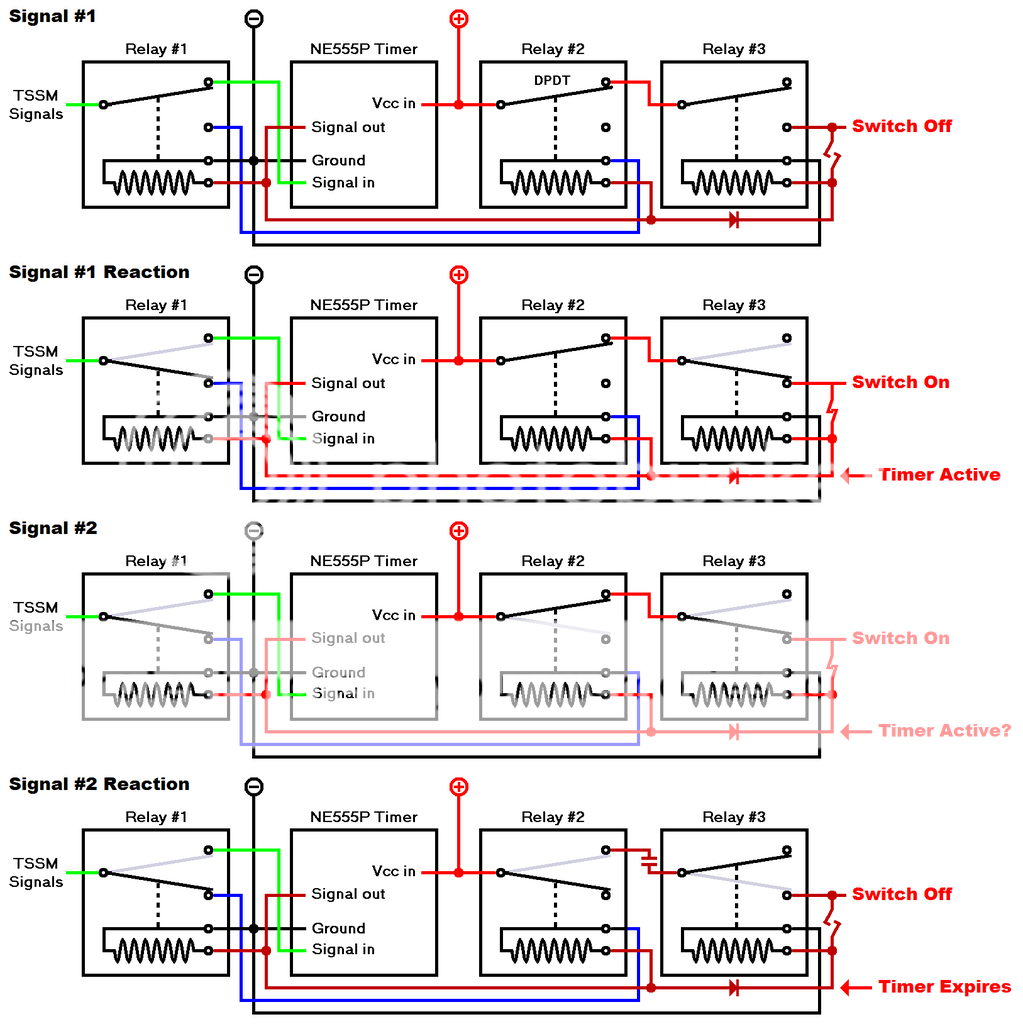Servo Wizard
New Member
Hello,
It has been quite awhile since I have visited this forum. I have a situation where I need to toggle the current on a line by using the signals from the security module on my Harley-Davidson motorcycle. My security module is the early design that requires a push button FOB. My objective is to create a key less ignition switch. I have accomplish that but, there is a problem. What I did not count on was Delphi leaving the system relay unprotected when the security is armed. If someone was to toggle the run/stop switch to run then it activates the system relay which in turn starts the fuel pump and lights the instrument panel as if the bike is ready to run but, it won't due to the security disabling the ignition through the ECM. Delphi provided no usable output from the security module that could be used to control a relay. All that I have is two BEEPS when I arm the security and a single BEEP when I disarm the security.
When the security is armed then I need to break the connection to the system relay. I know that the current that creates the tones can be used to toggle the connection but, I don't know how to get there? Do you have any suggestions?
Thanks,
Ron
It has been quite awhile since I have visited this forum. I have a situation where I need to toggle the current on a line by using the signals from the security module on my Harley-Davidson motorcycle. My security module is the early design that requires a push button FOB. My objective is to create a key less ignition switch. I have accomplish that but, there is a problem. What I did not count on was Delphi leaving the system relay unprotected when the security is armed. If someone was to toggle the run/stop switch to run then it activates the system relay which in turn starts the fuel pump and lights the instrument panel as if the bike is ready to run but, it won't due to the security disabling the ignition through the ECM. Delphi provided no usable output from the security module that could be used to control a relay. All that I have is two BEEPS when I arm the security and a single BEEP when I disarm the security.
When the security is armed then I need to break the connection to the system relay. I know that the current that creates the tones can be used to toggle the connection but, I don't know how to get there? Do you have any suggestions?
Thanks,
Ron




